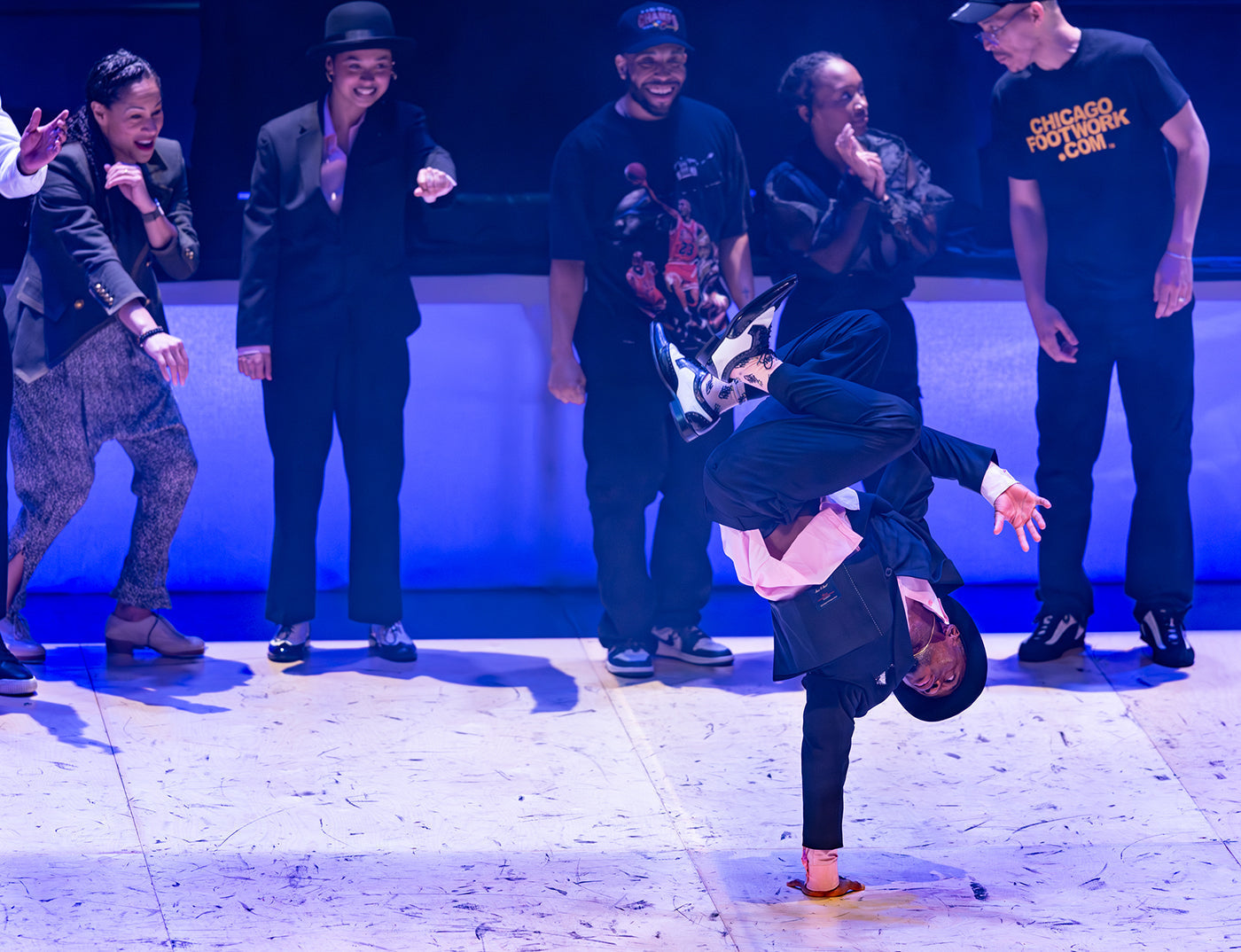As Casel exited, the spot moved to the opposite side of the stage and Rennie Harris’s Hip-Hop Orchestra Beatbox vocalists topped her tour-de-force with another tour-de-force. Kenny “the Human Orchestra“ Muhammad and Alexander “Bizkit” Sanchez joined Buddha, and the three traded different styles and pitches of beat-boxing. What is that? A practice of virtuosic vocal percussion performed with a hand-held mic that is as astonishing in range as some of the hip-hop moves seen in this show. The spot shifted over to Harris’s Hip-Hop Orchestra bucket drummers, led by Brytiece Wallace, and their accelerated rhythms pounded throughout the theater. The audience responding with applause, cheers and whistles.
Darrin M. Ross has been working RHPM’s music since 1984, long before Rome & Jewels became a global hit. The Bessie Award-winning composer, music editor, and live sound designer, is capable of orchestrating all these sound makers even as they approach sound barrier speed. And if there weren’t enough aural fireworks onstage, he inserted the nonpareil DJ Razor Ramon who all but lacerated his vinyl records and incited a call and response chorus from the audience.
But then the dance lessons really began with Chicago-based Creation Global, dancers Eddie Martin Jr., Donetta Jackson, Charles L. Parks IV, Christopher Thomas gave us a zingy set of Chicago footwork and in-line dancing acted as a prelude for the following pieces from Motor City and Philly.
The Detroit-based troupe, House of Jit, gave a class in jitting that goes back to the ’80s. It began with what seemed like Roma, Middle Eastern or Eastern European Klezmer riffs, that flowed into house music. As with most street dance, its improvisational and individualistic character created moves that seemed invented on the spot. But when I returned in the evening, I saw it was highly choreographed by Michael Manson who also danced with the seven member company.











comments